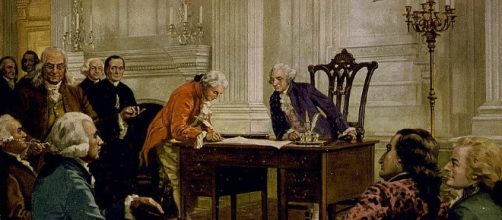Every occupation and every activity has its rules and regulations. On the weekend of Super Bowl LI, we saw this concept embodied by the referees on the field who guaranteed that the game conformed to the spirit and sense of fair play that the public expects from its favourite players. The presence of the regulations extends even to the highest office of the land where the rules are contained in the Constitution and the referees are the justices that ensure that any document leaving the Executive branch conforms to the formal and legal requirements expected of it.
The Constitution
On Inauguration Day President #Donald Trump swore on the Bible that he would uphold the Constitution of the Country during his term in office. This ceremony was not an empty gesture and the court battles over the ban on Moslem immigration is proof that the President’s powers are subject to review by the other branches of the American system of government.
The separation of powers contained within the Constitution is rightly considered the backbone of a modern and efficient Democracy. The Founding Fathers of the Republic knew well the foibles of human nature and the separation of powers was not a mere whim, but a powerful tool for the future. But the rules are not enough if those administering it are not up to the task.
The referees
The Justices of the Supreme Court who are the final arbiters of the Constitution are appointed for life to ensure their independence and after an exhausting process of selection and approval. Their independence from the other branches must not only be guaranteed, but must also be apparent to all. While each judge may have personal views on certain aspects of the Constitution and the Law, their final decisions must be firmly based on the document that they defend. Furthermore, differences of opinion are often disclosed by statements of dissention by individual judgments on contested points of their final decision.
As on the sporting field there are potential penalties on those who disrespect, or ignore the directions of the referees and these possible consequences must be borne in mind by those who disagree with the final decision.
Compliance
The Supreme Court of any country and not just the United States of America is the body that enshrines and protects the rights and basic principles of the Constitution. The measure of a country and above all its politicians are also measured on how they behave towards this highest of authorities.
For these reasons the developments in the courts over the challenges to the executive order on the bans on Moslem immigration are the subject of much attention not only from the American public, but also by governments and newspapers around the world. The outcome of these challenges and appeals are not simply a legal battle, they are serious debates about fundamental aspects of the American system of government and the results will determine how the President and the courts will seen by the citizens and world opinion for at least the near future.
Over the next few weeks the subject under examination of the courts may well be the individual executive orders, but in the long run these decisions will also be judgments on the activities of the Oval Office and therefore on the President himself. Donald Trump would do well to remember this when he signs the executive orders as he too is constantly under constant examination, as is right for the country’s President.

